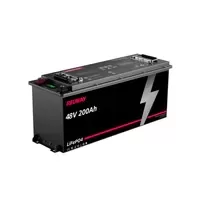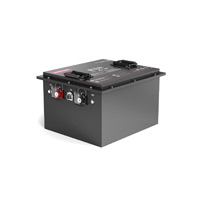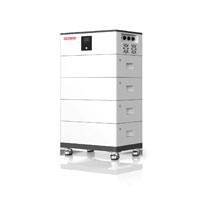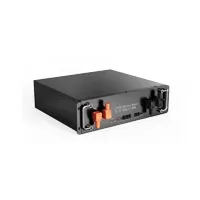Rev up your engines and get ready for the adrenaline-fueled world of Formula 1 racing! These high-speed machines are known for their sleek design, lightning-fast speeds, and cutting-edge technology. One crucial component that plays a pivotal role in these incredible feats of engineering is the battery. Yes, you heard it right – batteries are not just for everyday gadgets; they power F1 cars too! In this blog post, we will dive into the world of F1 racing and explore the fascinating realm of batteries used in these formidable beasts on wheels. So buckle up and prepare to be amazed by the electrifying world of F1 car batteries!
Why batteries are important in F1 racing
Why batteries are important in F1 racing
Batteries play a crucial role in the performance of Formula 1 cars. These high-performance vehicles rely on advanced battery technology to power various components, including the electric motor that provides an extra boost of speed and acceleration.
One of the key reasons why batteries are important in F1 racing is their ability to store and deliver energy efficiently. In a sport where every millisecond counts, having a reliable power source is essential for maintaining optimal performance throughout the race.
Furthermore, batteries also contribute to improving fuel efficiency in F1 cars. By harnessing electrical energy during braking or deceleration, known as regenerative braking, these batteries can store and reuse this captured energy later on. This innovative technology not only reduces fuel consumption but also enhances overall sustainability in motorsport.
Moreover, batteries have revolutionized the concept of hybridization in Formula 1. With increasing focus on environmental sustainability, F1 teams are incorporating hybrid systems into their cars to reduce carbon emissions without compromising performance. Batteries provide the necessary power for these hybrid systems to operate seamlessly alongside traditional internal combustion engines.
In conclusion (not conclusive), it is evident that batteries play a pivotal role in F1 racing by providing efficient energy storage and delivery capabilities while contributing to improved fuel efficiency and environmental sustainability. As technology continues to evolve, we can expect further advancements in battery technology that will shape the future of this exhilarating sport
The Evolution of Batteries in F1 Cars
The Evolution of Batteries in F1 Cars
Over the years, the batteries used in Formula 1 (F1) cars have undergone a remarkable evolution. In the early days of F1 racing, traditional lead-acid batteries were commonly used. However, as technology progressed and performance demands increased, these heavy and bulky batteries became obsolete.
In recent years, lithium-ion batteries have become the go-to choice for F1 teams. These lightweight and compact powerhouses provide high energy density and quick charging capabilities. They are capable of delivering instant bursts of power needed for acceleration while also providing sustained energy throughout a race.
To ensure fair competition and safety standards, governing bodies such as the International Automobile Federation (FIA) regulate battery usage in F1. Strict regulations govern aspects like battery capacity limits to prevent excessive power advantages or safety risks during races.
Moreover, advancements in battery technology continue to shape the future of F1 racing. Research is underway to develop even more efficient batteries with higher energy densities that can sustain longer distances without compromising on speed or reliability.
As we look ahead to future seasons of F1 racing, it’s clear that batteries will play an increasingly crucial role in powering these cutting-edge machines towards greater speeds and improved sustainability on track.
Stay tuned for more updates on how this pivotal component continues to evolve within the thrilling world of Formula 1!
Current Battery Regulations in F1
Current Battery Regulations in F1
When it comes to battery regulations in Formula 1 (F1), the focus is on safety, performance, and sustainability. The governing body, the Fédération Internationale de l’Automobile (FIA), has implemented strict rules to ensure that teams adhere to these standards.
There are limitations on the size and weight of batteries used in F1 cars. This is done to prevent excessive energy storage capacity and maintain a level playing field among competitors. Additionally, teams must comply with specific voltage requirements to ensure safety during races.
To further enhance safety measures, FIA mandates that batteries undergo rigorous testing procedures before they can be used in an official race. These tests involve assessing factors such as thermal stability and resistance to impact or fire hazards.
In terms of sustainability, FIA encourages the use of hybrid power units which combine both internal combustion engines and electric motors powered by batteries. This helps reduce carbon emissions while still maintaining high-performance levels on the track.
Furthermore, there are regulations regarding battery recycling and disposal after their lifespan expires. Teams must follow proper protocols for environmentally friendly practices when dealing with old or damaged batteries.
Current battery regulations in F1 aim to strike a balance between innovation, safety, and environmental consciousness. As technology advances further in this area, we can expect continued evolution of these regulations to keep up with changing demands within the sport.
The Types of Batteries Used in F1 Cars
The Types of Batteries Used in F1 Cars
When it comes to the high-octane world of Formula 1 racing, every component of a car plays a crucial role in its performance. And one such essential component is the battery. These powerful machines rely on batteries not only for starting their engines but also for powering various systems and functions throughout the race.
In recent years, Formula 1 has witnessed a significant shift towards hybrid technology, with cars incorporating energy recovery systems (ERS) that store and deploy electrical energy during races. One type of battery commonly used in F1 cars is the Lithium-Ion (Li-ion) battery. These lightweight and compact batteries offer high power density, making them ideal for providing bursts of energy during acceleration.
Another type that has gained popularity is the Lithium Polymer (LiPo) battery. LiPo batteries are known for their improved energy density compared to Li-ion batteries, allowing them to store more power within a smaller package. This makes them highly desirable in F1 racing where weight and space constraints are critical factors.
Additionally, supercapacitors have also made their way into F1 cars as an alternative or complementary energy storage solution. Supercapacitors can quickly charge and discharge large amounts of electrical energy efficiently, making them suitable for capturing regenerative braking power.
Each type of battery brings its own set of advantages and disadvantages to the table when it comes to F1 racing applications. While Li-ion batteries offer good overall performance, they may lack the necessary capacity for longer races. On the other hand, LiPo batteries provide higher capacity but can be more prone to thermal runaway if not handled correctly.
As technology continues to advance at breakneck speed, we can expect further innovations in battery technology specifically designed for Formula 1 racing needs. The future might witness even lighter yet more potent batteries capable of storing larger amounts of electrical energy while maintaining optimal safety standards.
In conclusion,
the types of batteries used in F1 cars play a vital role in the overall
Advantages and Disadvantages of Different Batteries
Advantages and Disadvantages of Different Batteries
When it comes to F1 racing, the type of battery used can make a significant difference in performance. Let’s take a closer look at the advantages and disadvantages of different batteries commonly found in F1 cars.
Lithium-ion batteries are widely used in F1 due to their high energy density. They provide ample power for acceleration and deliver consistent performance throughout a race. Additionally, they have a longer lifespan compared to other types of batteries, reducing the need for frequent replacements.
On the downside, lithium-ion batteries are relatively heavy, which can impact overall weight distribution in an F1 car. This extra weight may affect handling and cornering abilities on the track. Moreover, these batteries require careful monitoring as they can overheat if not managed correctly.
Another option seen in some F1 cars is solid-state batteries. These advanced batteries offer even higher energy density than lithium-ion ones while being lighter and more compact. With faster charging capabilities and increased efficiency, solid-state batteries could revolutionize F1 racing.
However, current limitations with solid-state technology include cost factors and production challenges that prevent widespread adoption at this time. As such, teams using them face limited availability and potential reliability concerns.
In conclusion (not concluding), selecting the right battery for an F1 car involves weighing various factors such as power output, weight considerations,and technological advancements. Each type has its own set of advantages but also drawbacks that must be carefully evaluated by teams seeking optimal performance on the track
Future of Batteries in F1 Racing
Future of Batteries in F1 Racing
The future of batteries in F1 racing holds exciting possibilities for the sport. As technology continues to advance, we can expect to see even more powerful and efficient batteries being used in these high-performance cars.
One area of focus for future battery development is increasing energy storage capacity. With larger and more advanced batteries, F1 cars will be able to store and utilize even more energy during a race. This means drivers will have access to increased power when they need it most, such as during overtakes or acceleration out of corners.
Another aspect that will likely be improved upon is charging time. Currently, it takes several hours to fully charge the batteries used in F1 cars. However, with advancements in battery technology, we can anticipate faster charging times that would allow teams to quickly recharge their batteries between practice sessions or qualifying rounds.
Additionally, weight reduction will continue to play a crucial role in future battery development for F1 racing. Lighter batteries mean less overall weight on the car, resulting in increased speed and better handling capabilities.
Furthermore, sustainability is becoming an increasingly important factor across all industries – including Formula 1 racing. As the world moves towards greener technologies and practices, we can expect to see a shift towards more environmentally friendly battery solutions within the sport.
In conclusion…
While it’s difficult to predict exactly what the future holds for batteries in F1 racing, one thing is certain: there are plenty of exciting developments on the horizon. From increased energy storage capacity and faster charging times to lighter weights and greater sustainability efforts – these advancements promise a thrilling future for both drivers and fans alike!
Conclusion
Conclusion
In this article, we have explored the fascinating world of F1 cars and their batteries. We have seen how these high-performance vehicles rely on batteries to power various components and enhance overall performance.
Over the years, battery technology in F1 racing has evolved significantly. From the early days of nickel-cadmium batteries to the current era of lithium-ion batteries, there has been a constant drive for innovation and efficiency.
The current regulations in F1 impose strict limitations on battery usage, promoting sustainability and pushing manufacturers to develop more sustainable solutions. These regulations ensure that teams are constantly seeking ways to optimize battery performance while adhering to environmental standards.
F1 cars primarily use two types of batteries: Energy Store (ES) and Control Electronics (CE) units. The ES unit stores electrical energy harvested from regenerative braking or exhaust heat recovery systems, providing an extra boost during acceleration. On the other hand, CE units manage all electronic functions within the car.
Each type of battery comes with its own set of advantages and disadvantages. Lithium-ion batteries offer high energy density but can be prone to overheating if not managed properly. Meanwhile, solid-state batteries show promise as they provide better safety features but currently lack the required energy density for optimal performance in F1 racing conditions.
Looking ahead into the future, advancements in battery technology will continue to shape F1 racing. With ongoing research into alternative materials such as graphene or solid-state electrolytes, it is possible that we may witness even more powerful and efficient batteries taking center stage in Formula 1.
In conclusion,
Batteries play a crucial role in powering F1 cars’ impressive speed and capabilities on race day. As technology advances at an exponential rate, we can expect further improvements in both battery efficiency and sustainability within this highly competitive sport.
So next time you watch a thrilling Formula 1 race unfold before your eyes,
take a moment to appreciate just how much those small yet mighty batteries contribute to the exhilarating action on the track.




























